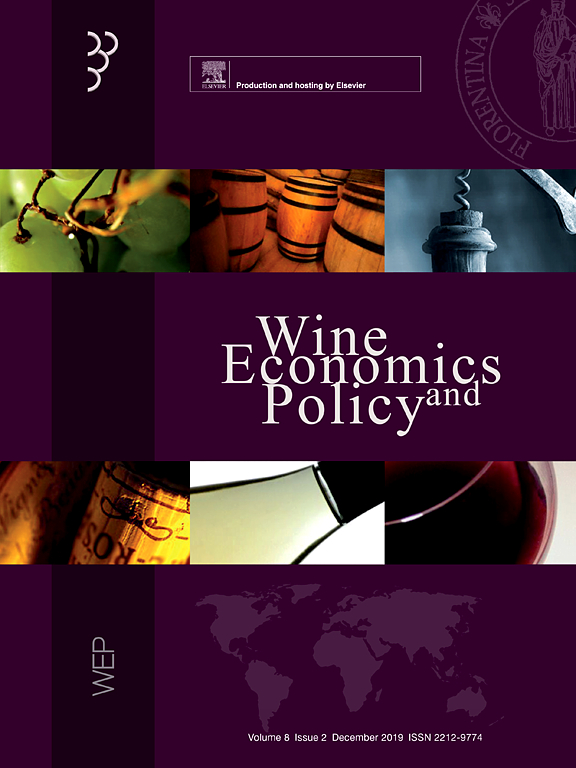Empirical evidence of lumping and splitting: Expert ratings’ effect on wine prices
Published 2019-12-31
Keywords
- Lumping,
- Splitting,
- Categorization,
- Wine,
- Expert ratings
- Status,
- Reputation ...More
How to Cite
Abstract
Categorization is essential to everyday cognition, aiding in the organization and comprehension of information and salient stimuli. In many cases, we partake in the process of “lumping” and “splitting,” where similar items are lumped together, while dissimilar items are split apart in an exaggerated manner. To test whether or not lumping and splitting plays a role in how expert ratings affect prices, we examined pinot noir wines from the Willamette Valley AVA with the Wine Spectator's ratings (1984–2008). Regression analyses revealed a sharp distinction in the relationship between price and bottle quality between wines rated below 90, and wines with 90 + ratings. Wines with ratings below 90 were lumped together in to a “single mental cluster.” Wines with 90 + ratings were similarly lumped together. Not only is getting into a higher mental cluster statistically and economically significant, but there is also a “mental quantum leap” from a rating of 89–90. Moreover, the impact of expert scores on prices was magnified by an additional premium, attributable to two status indicators—sub-AVA and single vineyard—in higher clusters.

